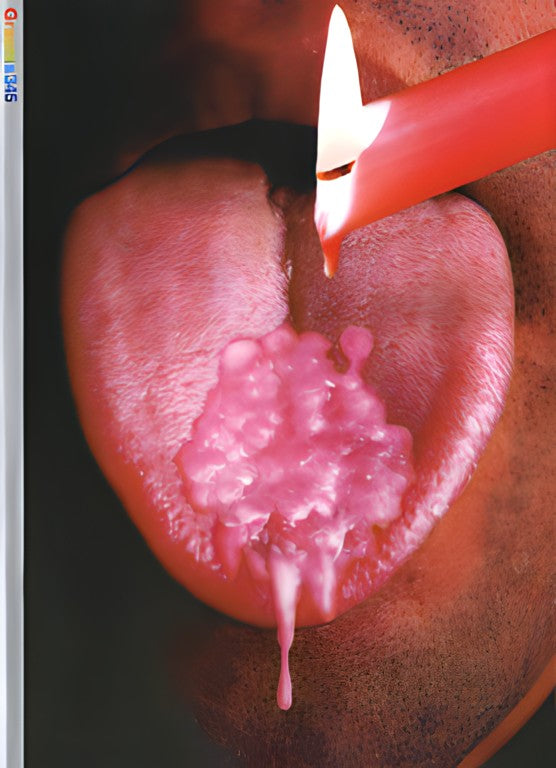Through a 161-Year-Old Lens: How Paramount+’s “Lawmen: Bass Reeves” Brought Tintypes Back
When it comes to honoring history, sometimes it's not just the story but how you tell it that matters. Paramount+'s Lawmen: Bass Reeves brought the tale of the legendary deputy U.S. Marshal to life, and photographer Sarah Coulter was tasked with ensuring its visual storytelling was as authentic as the narrative. The result? A Gold-winning campaign in the 2024 Graphis Photography Awards that revisited the roots of photography itself: tintypes.

A Glimpse into the Past
The portraits for Lawmen: Bass Reeves were created using the wet plate collodion process, a method that dates back to the mid-19th century—the same era as Bass Reeves himself. Sarah's use of an 8x10 Deardorff large format camera paired with a 161-year-old Dallmeyer 2B Petzval lens wasn't just a stylistic choice but a commitment to authenticity. The lens, crafted in 1862, lent a period-accurate bokeh to the images, while the process of sensitizing, developing, and fixing the plates on-site mirrored the meticulous artistry of photography's early pioneers.

Creating Period-Perfect Worlds
These portraits continued beyond technique. Sarah and her team constructed a portable darkroom on set to process black tin and ruby glass plates. Drawing inspiration from historical tintypes, they incorporated painted scenic backdrops, show-accurate props, and gilded frames to craft diorama-like environments for each character. The result was a series of portraits that felt like they had been unearthed from the very era in which Bass Reeves lived and worked.

The Reaction
The magic of tintypes isn't just in the final image but in the process itself. Watching their portraits materialize before their eyes, the cast of Lawmen: Bass Reeves was riveted. This authentic experience extended to audiences as well. A behind-the-scenes video of the process shared on TikTok during the show's premiere garnered significant engagement, while the tintype gallery on Instagram became the campaign's top-performing still asset. The exclusivity of the portraits used for the key art also earned them coverage in Entertainment Weekly and other press outlets, adding to their allure.

Why It Matters
In an age of digital convenience, Sarah's commitment to using historical techniques instead of post-production effects made this campaign stand out. Crafting the portraits authentically wasn't just about aesthetics; it was a nod to the era and the legendary figure at the heart of the series. The tintype portraits of Lawmen: Bass Reeves marry art with authenticity. They don't just depict history—they honor it.

Curious about the fascinating history of tintype photography?
Tintype photography, also known as ferrotype, emerged during the mid-19th century as a practical and durable photographic method that revolutionized portraiture. The process stems from the wet plate collodion technique, which was invented in 1851 by Frederick Scott Archer, an Englishman who sought a faster and more detailed alternative to the earlier daguerreotype and calotype methods. Archer's process became foundational to photographic innovation across Europe and the United States.
The tintype process itself, however, was specifically developed and patented in 1856 by Hamilton Smith, a professor at Kenyon College in Ohio. Unlike daguerreotypes, which were made on polished silver plates, or ambrotypes, which used glass, tintypes employed a thin sheet of blackened iron (mistakenly called tin) coated with photosensitive chemicals. This made tintypes far more durable and less expensive to produce, allowing photography to become more accessible to the public.
While the technique originated in the United States, its adoption was global. Tintypes quickly spread to Europe, including Paris, which was already at the forefront of photographic innovation due to the earlier daguerreotype's invention by Louis Daguerre in 1839. Parisian photographers and studios incorporated the tintype method into their offerings, further popularizing it across the continent.
Tintypes gained widespread appeal for their affordability and ability to be created on-site. Photographers could set up darkrooms in studios, fairs, or even battlefields, capturing everything from family portraits to keepsakes for soldiers during the Civil War. The portability and immediacy of tintypes made them a favorite for itinerant photographers.
Despite being largely replaced by other photographic methods in the 20th century, tintypes remain cherished for their distinct aesthetic—marked by rich textures, high detail, and a timeless quality. Today, they hold a significant place in the history of photography, celebrated for their artistry and as a testament to the democratization of the medium during the 19th century.
To see more Photography 2024 competition winners, click here.
You may also like
Ghost Forests Emerging Along the Chesapeake Bay
Photographer Cameron Davidson has spent decades capturing the beauty and fragility of landscapes from the air and…
Read MoreFrom Matchboxes to Masterpieces with Vishal Vora
Indian designer Vishal Vora has always seen design as more than visuals—it is a universal language that…
Read More
Related Annuals & Publications
View AllBecome a Graphis Member
- 1-Year Membership Subscription
- Enjoy 50% off on Call for Entries
- 1-Year FREE Subscription to Graphis Journal
- Your Portfolio online with profile + links
- Get 20% off on Graphis Books








